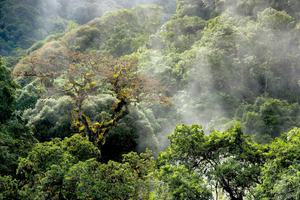Countries need to fulfill their commitments to restore 1 billion hectares of degraded land, an area larger than China, by 2030 to avert dangerous climate change, according to a new report from the United Nations Environment Programme (UNEP) and the Food and Agriculture Organization.
The report warns that preserving existing natural areas will be insufficient to meet the goals of the Paris Agreement. Released in the lead-up to World Environment Day on June 5, it calls for restoring forests, reviving wetlands, re-wetting peatlands, and rehabilitating farms, for instance, by planting trees and shrubs on croplands. Such measures will draw down carbon dioxide from the atmosphere, curb species loss, and help feed a growing human population.
More than half of global GDP depends on nature, according to the report. Currently around 20 percent of the world’s croplands and grasslands are stressed, it says, while 35 percent of natural inland wetlands have been lost since 1970.
At least 50 countries have pledged to protect 30 percent of the planet by 2030. For its part, the Biden administration has set a target of conserving 30 percent of U.S land by the end of the decade, though it remains unclear what resources will be devoted to this effort. Currently, just 12 percent of U.S. lands are officially protected, the Washington Post reported.
In a previous report, the UNEP said that global spending on land restoration needs to reach $350 billion by 2030, triple the current level. Additionally, the new report says, businesses should endeavor to make their supply chains more sustainable, noting that every dollar spent on restoration yields up to $30 in benefits.
Tim Christophersen, head of UNEP’s nature for climate branch, told the Thomson Reuters Foundation that restoring 1 billion hectares would require “a completely different mindset … away from small projects to a scaled-up effort.” He added, “It’s essential for our biodiversity and climate change targets, but also for many of the sustainable development goals.”



